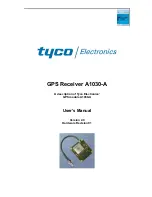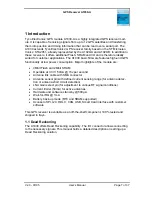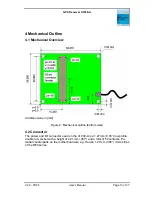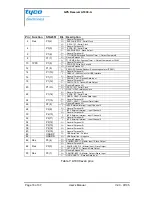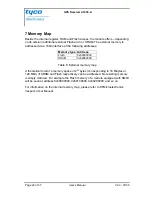
GPS Receiver A1030-A
3.2 Antenna Connection
It is recommended to use an active GPS antenna with supply voltage of 3 to 5VDC
and a current draw of 50mA maximum. The on-module current limiter will not allow
use of antennas with a higher current draw. In addition, it is recommended to use
an antenna with a current draw that falls into the range detectable by the internal
antenna current monitor. The values are defined in paragraph 12.2 Antenna Sensor
Pin (ANTSTAT). The quality of the GPS antenna chosen is of paramount impor-
tance for the overall sensitivity of the GPS system. An active antenna should have a
gain
≥
20dB and a noise figure
≤
1.5dB, which applies to more than 95% of the an-
tennas available in the market.
3.3 Serial Port Settings
The default configuration within the standard GPS firmware is:
•
Serial 0 (NMEA) 4800 baud, 8 data bits, no parity, 1 stop bit, no flow control
•
Serial 2 (RTCM) 4800 baud, 8 data bits, no parity, 1 stop bit, no flow control
The default configuration within the Dead Reckoning GPS firmware is:
•
Serial 0 (NMEA) 57600 baud, 8 data bits, no parity, 1 stop bit, no flow control
•
Serial 2 (RTCM) 4800 baud, 8 data bits, no parity, 1 stop bit, no flow control
3.4 Improved TTFF
In order to improve the TTFF (Time To First Fix), it is recommended to support the
module – and therefore the RTC - with a back-up battery when no system power is
available. Standard operation mode is entered with the ENABLE pin on HIGH level.
With the Wakeup ENABLE pin on LOW level, low power mode will be entered. If
still power is being supplied to VBAT, the RTC keeps on running while the internal
processors will be stopped. The power consumption will drop from typically 50mA to
typically 30µA. Please see also paragraph 12.6 ENABLE pin (low-power mode).
Page 12 of 37
User’s Manual
V2.0 - 07/05

